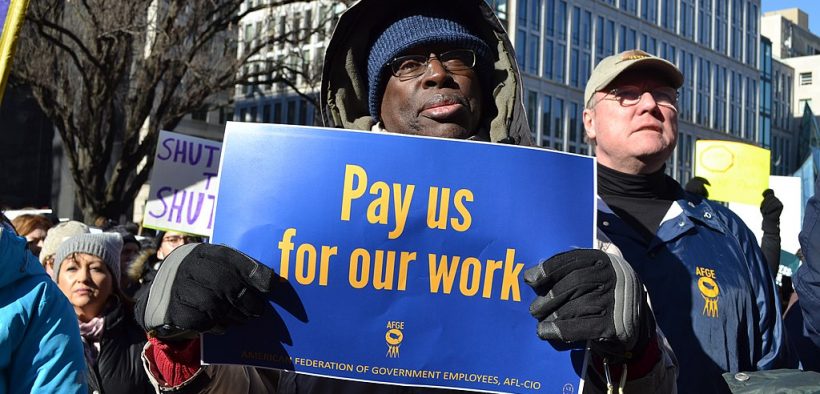Budget Battle Looms, Is the Federal Government Heading to Another Shutdown?

The federal government has yet to resolve its impasse over appropriations as another government budget deadline nears.
Lost amidst the impeachment news swirling in recent weeks was the signing into law on September 27 of a temporary federal government spending resolution. Extensions and exceptions granted by the measure will keep government programs funded until November 21, but will the resolution prevent or just delay another government shutdown?
Short on Time, Long on Division
The stopgap bill was necessary after lawmakers failed to reach an agreement on new appropriation bills for the military and dozens of other government agencies before Fiscal Year (FY) 2019 funding expired on September 30. Congress now has a few extra weeks to continue working on the packet of appropriations bills for next year. If they fail to pass the measures this November, the government could experience its second shutdown of 2019.
This is not a lot of time to decide on something as important and divisive as government spending, and Congress is already far behind.
One of the first steps to passing appropriations bills is creating and passing a budget resolution to set national priorities and plans to pay for them, so far this has not happened. Democrats and Republicans still disagree sharply on several big-ticket items in the packet of appropriations bills that need to be passed. With Democrats in control of the House, a Republican in the White House, and Republicans making up a narrow majority in the Senate, the fight over the budget is likely just heating up.
The Budget Issues Dividing Democrats and Republicans
Spending Cap
One of the reasons for the slow progress with appropriations this year was uncertainty over how much money the Federal government would have to work with. Budget bills include a cap on the government’s discretionary spending levels and the previous cap was scheduled to fall from $1.244 trillion for FY 2019 to $1.119 trillion for FY 2020. A new cap of $1.288 trillion for 2020 was enacted in August. Raising the cap has averted the need for some spending cuts, but it left lawmakers with only a couple of months to figure out a budget based on the new cap.
Border Wall and Military Spending
Another big challenge is the debate over spending for a border wall. Democratic lawmakers attempted to block a bill earlier this summer that would have pulled between $3 and $4 billion away from military projects and put it towards the wall. This amount is only a small fraction of the military’s budget of about $730 billion, but the loss of this particular funding would put some military projects in jeopardy and have negative economic impacts in places like Guam and Hawaii.
Military spending is appropriated under the National Defense Authorization Act (NDAA). The NDAA is considered “must pass” legislation and it’s one of the most contentious of the appropriations measures currently stalled. In addition to border wall spending, other points of conflict in the NDAA are funds for the Space Force, and a potential amendment to prevent the President from taking military action against Iran.
Abortion Information and Government Funding
The appropriations bill for Health and Human Services has emerged as another major sticking point. Senate votes on the measure were canceled in September in response to an announcement by Senator Patty Murray (D-Wa) that she planned to introduce an amendment that would block the Trump administration from implementing the Title X family planning rule. The rule currently prohibits health care providers who offer information about abortion from receiving any federal funds.
What Happens Next
Compromise on the rest of the bills should be somewhat less challenging. If Congress and President Trump can find a way to pass some version of the NDAA and the Health and Human Services appropriation bill then the rest should fall into place.
In the week and a half since the stopgap measure was passed there has been no sign of movement on the most problematic of the appropriations bills. Because the issues being debated are a high priority for both parties any compromise won’t come easy.
At the same time, both sides should have a strong sense of urgency to avoid another shutdown at this point. Government shutdowns are not that uncommon and have been happening with some regularity since the 1970s, but the previous shutdown was the longest, and costliest, in U.S. history and ended just nine months ago.







